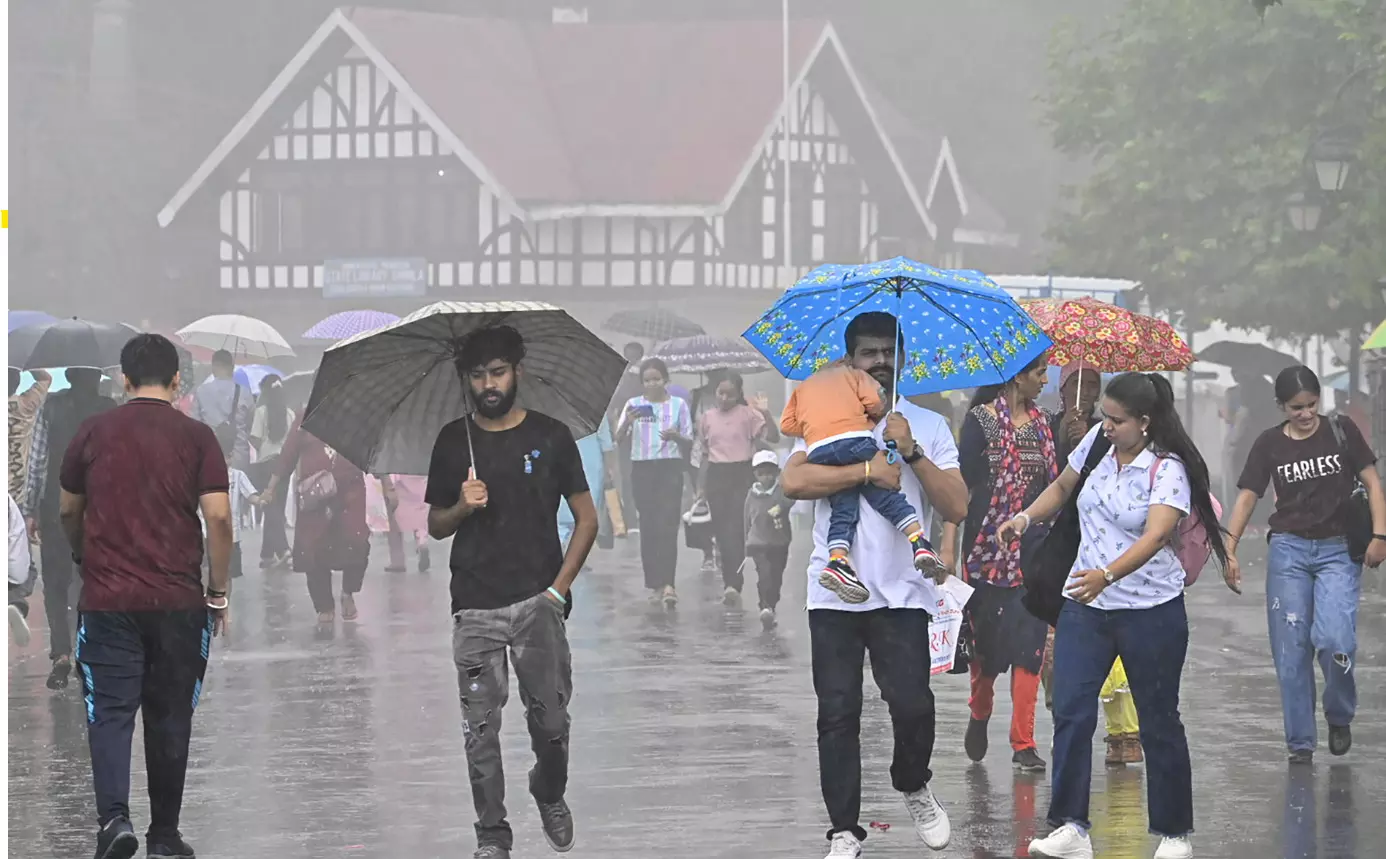Resilience through predictions
Over 150 years, IMD has revolutionised weather forecasting through advanced technologies, benefiting agriculture and enhancing disaster preparedness. It’s innovative march is a positive signal towards conquering existing challenges

For India, the monsoon is not just rains; it is a multifaceted phenomenon that profoundly influences the nation's socio-economic fabric. Indian agriculture and the economy are intricately linked to the variability of the southwest monsoon. Therefore, making accurate forecasts across different timescales is critical for effective planning in various sectors.
Since its inception in 1875, the India Meteorological Department (IMD) has been at the forefront of monitoring and forecasting the monsoon. Over its 150-year journey, IMD has transformed from a modest observatory network into a cutting-edge scientific institution providing comprehensive weather and climate services. Today, IMD operates an extensive network comprising surface observatories, approximately 6,000 rain gauges, upper-air radiosondes, Doppler weather radars, agro-meteorological stations, and state-of-the-art satellite systems.
The accuracy of monsoon predictions has significantly improved over the past decade, paving the way for numerous practical applications. The Monsoon Mission, an initiative by the Ministry of Earth Sciences (MoES), has played a pivotal role in enhancing IMD’s forecasting capabilities. This remarkable progress stems from systematic advancements in data assimilation and the development of high-resolution prediction models with refined model physics. Today, IMD leverages advanced ensemble forecasting systems for short, medium, extended-range, and seasonal predictions, establishing itself as a global leader in weather and climate forecasting.
Historically, short-range forecasts (2-3 days) relied on synoptic methods, which were limited in accuracy. A paradigm shift occurred with the introduction of Numerical Weather Prediction (NWP) in 1988, marked by the establishment of the National Centre for Medium Range Weather Forecasting (NCMRWF) and India’s first supercomputer. This milestone expanded NWP’s scope and importance, laying the groundwork for forecasts based on dynamic models.
Currently, IMD operates two advanced ensemble-based operational NWP systems, producing medium-range forecasts with reliable skill up to five days—an improvement of two days compared to earlier forecasting systems. Furthermore, probabilistic forecasts, such as those utilizing the Extreme Forecast Index (EFI), provide a lead time of 4-5 days for extreme weather events. These medium-range forecasts have proven invaluable for Indian farmers, guiding them for critical agricultural decisions. Independent evaluations have shown that IMD’s agro-meteorological advisories significantly benefit farmers, particularly those in low-income groups.
The indigenously developed Extended-Range Forecasting (ERF) systems can predict monsoon conditions 10 to 30 days in advance. These systems have proven effective in forecasting 2-3 weeks in advance, the key transitions, such as shifts between active and break phases of the monsoon and the timing of early or late onset of the monsoon. Based on these forecasts, IMD has developed applications for critical sectors, such as agriculture, water resources, energy, and health, to improve preparedness and decision-making for longer lead times.
Following the Great Famine of 1877, IMD initiated seasonal monsoon forecasting, issuing its first forecast on June 4, 1886. Early monsoon seasonal forecasts based on statistical methods were often found inaccurate. But persistent efforts driven by economic and public demand encouraged IMD to continue seasonal monsoon predictions. In 1988, IMD introduced a 16-parameter power regression model, which performed poorly between 1988 and 2006. However, a breakthrough came in 2007 with the adoption of an indigenously developed statistical ensemble forecasting system. This forecasting system significantly improved forecast accuracy, achieving a positive correlation of 0.55 between 2007 and 2024 and successfully predicting the 2015 drought and above normal rainfall in 2024. Recognizing the potential of dynamical models, IMD took another leap in 2017 by introducing a state-of-the-art dynamical forecasting system based on coupled climate models, developed under the Monsoon Mission. In 2021, IMD further enhanced its forecasting capabilities with the development of a multi-model ensemble system for seasonal monsoon predictions, which is in operational use today.
Systematic research into dynamics, variability, and teleconnections has further improved our understanding of the monsoon. While significant progress has been made, there are still areas where improvement is needed. The skill of deterministic forecasts for extremely heavy rainfall events is limited to 1-2 days. Accurately predicting such heavy rainfall events and associated flooding continues to be a considerable challenge. Local weather forecasts, particularly for major cities, require further refinement. Additionally, improvements in the ERF system are necessary to ensure reliable third-week forecasts for better use by farmers. Seasonal forecasts, though improved, still fall short of their potential predictability, requiring models to address systematic errors and better simulate monsoon teleconnections with the equatorial Pacific, Atlantic, and Indian Oceans.
Future advances in NWP will focus on the implementation of global ensemble prediction systems with a horizontal resolution of 1-3 km, enabling a more accurate representation of physical processes. IMD will soon move to an ensemble prediction system with a horizontal resolution of 6 km, which is an improvement over the current resolution of 12 km. The improvement of observation networks incorporating state-of-the-art technologies such as crowdsourcing, CubeSats, IoT devices and unmanned platforms will significantly improve data quality and forecast efficiency. To deepen our understanding of monsoon dynamics and cloud physics, separate research testbeds have been set up in Bhopal and Mumbai. IMD is in the process of setting up another testbed for mesoscale weather systems in Odisha.
As user expectations continue to grow, IMD must continuously innovate and proactively address these demands. The recently launched Mausam Mission is a critical initiative to enhance monsoon prediction capabilities in the country. By embracing cutting-edge technologies and continually improving forecasting systems, IMD can sustain its legacy as a global leader in weather and climate services and help India navigate the challenges of climate change.
The writer is Vice Chancellor, Atria University, Bengaluru. Views expressed are personal



